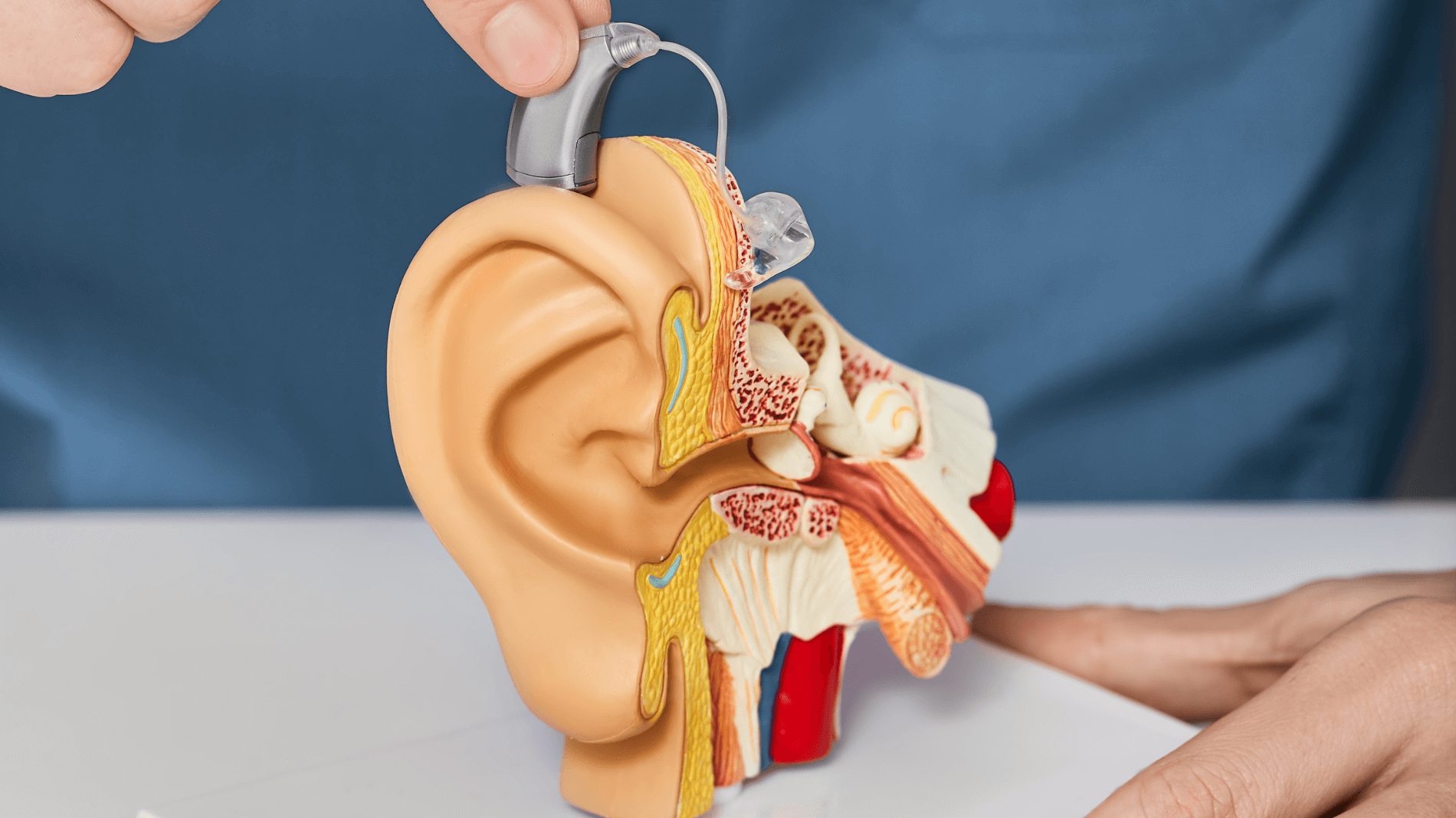
- A Guide to Different Hearing Aid Styles - May 6, 2025
- What is the Lifespan of Hearing Aid Batteries? - April 27, 2025
- Understanding the Different Types of Assistive Listening Technology - April 15, 2025
There are several types of hearing loss, each with a unique set of causes, symptoms, and treatment options. One common type of hearing loss is conductive hearing loss. It’s characterized by difficulties in sound transmission through the outer or middle ear.
What is Conductive Hearing Loss?
Conductive hearing loss occurs when sound waves are unable to pass efficiently through the outer or middle ear, resulting in reduced auditory perception. Unlike sensorineural hearing loss, which affects the inner ear or auditory nerve, conductive hearing loss typically involves mechanical obstruction or dysfunction within the ear’s conductive pathway. This obstruction blocks the transmission of sound vibrations to the inner ear and results in decreased sound clarity and volume.
Causes of Conductive Hearing Loss
Conductive hearing loss can stem from various underlying factors, including:
- Blockage or Obstruction: Blockages in the ear canal, such as earwax buildup, foreign objects, or structural abnormalities, can impede the passage of sound waves and lead to conductive hearing loss.
- Middle Ear Infections: Acute or chronic infections of the middle ear, known as otitis media, can cause inflammation, fluid buildup, and eardrum perforation. This disrupts sound conduction and results in temporary or permanent hearing loss.
- Otosclerosis: Otosclerosis is a condition characterized by abnormal bone growth in the middle ear, particularly around the stapes bone. This growth may interfere with sound transmission and lead to conductive hearing loss.
- Traumatic Injury: Traumatic injuries to the head or ear can damage the delicate structures of the outer or middle ear, resulting in conductive hearing loss.
- Congenital Abnormalities: Some individuals may be born with congenital abnormalities or malformations of the outer or middle ear, such as malformed ear canals or ossicular chain abnormalities. This can contribute to conductive hearing loss.
Symptoms of Conductive Hearing Loss
The symptoms of conductive hearing loss can vary depending on the underlying cause and severity of the condition. Common symptoms may include:
- Reduced Sound Intensity: Sounds may appear quiet or muffled, particularly at lower frequencies, making it difficult to hear conversations or environmental noises.
- Difficulty Understanding Speech: Individuals with conductive hearing loss may struggle to understand speech, especially in noisy environments or when multiple speakers are talking.
- Ear Pain or Discomfort: Some individuals may experience ear pain, pressure, or discomfort, particularly if the cause of conductive hearing loss is related to inflammation or infection of the middle ear.
- Tinnitus: Tinnitus, or ringing in the ears, may occur as a secondary symptom of conductive hearing loss, manifesting as persistent or intermittent sounds in one or both ears.
- Feeling of Fullness or Blockage: A sensation of fullness, blockage, or “plugged” ears may accompany conductive hearing loss, particularly if there is a blockage or obstruction in the ear canal.
Diagnosing Conductive Hearing Loss
Diagnosing conductive hearing loss typically involves a comprehensive evaluation by a hearing health professional. Tests will include:
- Physical Examination: A thorough examination of the ear canal, eardrum, and middle ear structures using an otoscope or tympanometer will assess for signs of blockage, inflammation, or structural abnormalities.
- Audiometric Testing: Audiometric tests, such as pure-tone audiometry and tympanometry, may be conducted to assess hearing sensitivity, middle ear function, and the severity of conductive hearing loss.
- Imaging Studies: In some cases, imaging studies such as CT scans or MRI scans may be recommended to evaluate the underlying cause of conductive hearing loss, such as otosclerosis or congenital abnormalities.
Treating Conductive Hearing Loss
Treatment options for conductive hearing loss depend on the underlying cause and may include:
- Earwax Removal: If earwax buildup is causing conductive hearing loss, earwax removal by a healthcare professional may be necessary to clear the ear canal and restore hearing.
- Medication: Antibiotics or antifungal medications may be prescribed to treat middle ear infections or inflammation, helping to alleviate symptoms and restore middle ear function.
- Surgical Intervention: In cases where conductive hearing loss is due to structural abnormalities or otosclerosis, surgical procedures such as tympanoplasty, ossiculoplasty, or stapedectomy may be recommended to repair damaged tissues.
- Hearing Aids: For individuals with permanent conductive hearing loss or those who are not candidates for surgery, hearing aids may be prescribed to amplify sound and improve auditory perception.
Find Your Solution for Conductive Hearing Loss
Do you have conductive hearing loss? Visit us today to assess your hearing loss and explore your treatment options.
